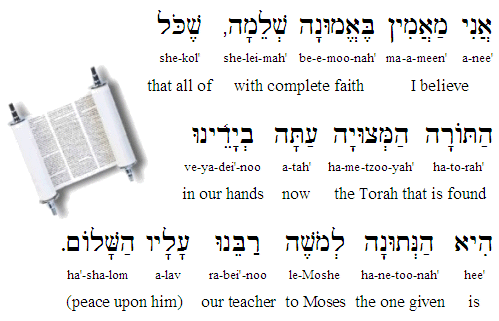|
"I believe with complete faith that the entire Torah now in our hands is the same one that was given to Moses our teacher, peace be upon him."
Maimonides states, "We do not know exactly how the Torah was transmitted to Moses. But when it was transmitted, Moses merely wrote it down like a secretary taking dictation...."
Maimonides' dictation theory of inspiration of the written Torah (Torah shebikhtav) is debtable by many Jews, despite his warning that those who question it are infidels. Actually, most Jews today, including many Orthodox Jews, are amenable to "higher criticism" of the Scriptures, indicating that, for example, the Masorah is valid and that the Masoretes compared all extant textual variations when attempting to create a definitive text (i.e., the Masoretic text).
Maimonides also believes that (to a lesser degree) this principle applies to the Oral Torah (Torah sheba'l peh), though again most Jews today would reject the idea that the Oral Torah is infallible.
In general, this principle is adhered to in good faith when the core of the written Torah (and all of its essential truths) is said to come from the hand of Moses, while allowing that the scrolls themselves may have seen some redaction over the centuries.
|



